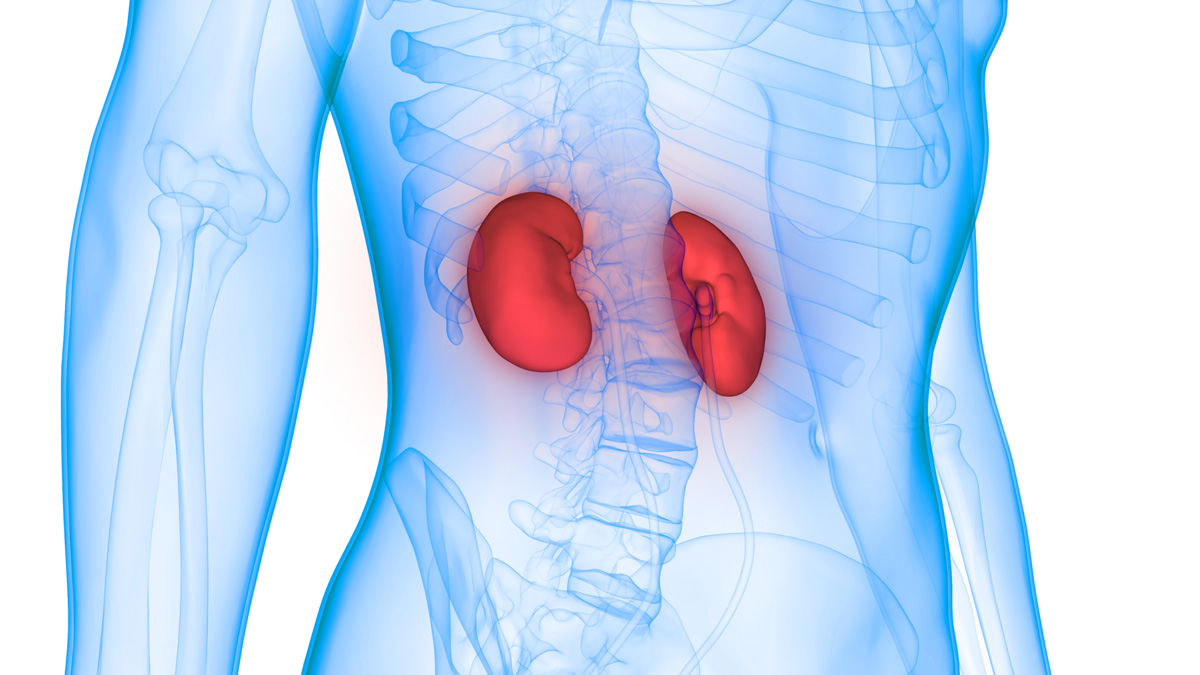Beyond glucose in type 2 diabetes: how Novo Nordisk is looking to address chronic kidney disease

After moving from academia to industry, Stephen Gough is now Novo Nordisk’s global chief medical officer, working on putting patients at the centre of the company and providing medical leadership to its R&D strategy, as well as seeking out pre-competitive partnerships. We speak to him about the company’s drive to tackle the complications of type 2 diabetes, such as chronic kidney disease, and how they see the future unfolding with GLP-1 agonists and beyond.
What are some of the major challenges still facing diabetes patients today?
There are currently 425 million people globally estimated to have type 2 diabetes. Over the next 20 years, that could rapidly increase to over 600 million, maybe as high as 700 million.
Cardiovascular disease is the number one cause of morbidity and mortality in people with type 2 diabetes. We also know that cardiovascular disease and chronic kidney disease are inextricably linked. Both conditions are very common, both are associated with significant morbidity and mortality, and there's a massive unmet need. We don't have any specific treatments currently for diabetic kidney disease or chronic kidney disease.
People with diabetes have a whole range of other complications, and we're looking into those too. For example, diabetic retinopathy is the centre of our FOCUS trial, which has just started. We are continuing to invest in areas such as cardiovascular disease as well as metabolic conditions associated with type 2 diabetes and obesity like non-alcoholic steatohepatitis (NASH).
We’re committed to tackling these complications because they are important for patients. Our commitment is clear in many ways, not least through our investment in several big outcomes trials. In this regard Novo Nordisk is leading the way.
What is Novo Nordisk’s approach to chronic kidney disease?
We've become increasingly committed to chronic conditions that include cardiovascular disease and chronic kidney disease – the reason being, as previously mentioned, that diabetes is the leading cause of both conditions.
Around one in three adults with type 2 diabetes has chronic kidney disease, and unfortunately around 50% of those patients don’t have a clear laboratory diagnosis. Chronic kidney disease is a global healthcare problem in its own right but we also know that people with chronic kidney disease have a 30-fold higher cardiovascular mortality.
Novo Nordisk has had at least two large trials with our two main GLP-1 agonists – LEADER with liraglutide and SUSTAIN-6 with semaglutide – in which we included important renal endpoints. Liraglutide showed over a 20% reduction in chronic renal disease composite endpoints and SUSTAIN-6 showed a 36% reduction.
These exciting results have driven us into conducting the first ever dedicated outcomes trial with a GLP-1 receptor agonist in chronic kidney disease, called the FLOW trial, which will be starting within the next month.
Although it is important to look at the future pipeline, it is also important to recognise that we are making a significant investment in our GLP-1 receptor agonists, because of the strong data that we have shown in recent outcome trials.
Novo Nordisk are world leaders in diabetes and obesity and our ambition is to continue to lead in these important areas. Clearly we also wish to establish ourselves as leaders in cardiovascular disease and chronic kidney disease. Regarding a dedicated real outcomes trial with respect to GLP-1 receptor agonists in type 2 diabetes, our FLOW trial will be a first.
What kinds of public-private partnerships can help tackle unmet needs in diabetes?
In terms of public-private partnerships, the largest initiative within Europe has been the Innovative Medicines Initiative (IMI). As part of the second IMI, we are the lead pharma partner in Hypo-Resolve as we aim to reduce the burden of hypoglycemia along with other major pharma and academic partners. We’ve also just put out a call for a substantial obesity programme, as we endeavor to learn more about obesity as a chronic disease. Obesity is a chronic disease associated with numerous comorbidities not just impacting on diabetes, but also on kidney disease, and on so many other different areas. As part of the third IMI, I think we will continue to look strategically at some of the big unmet medical needs that I have been discussing.
Do you think a more preventative approach to diabetes, through tackling areas like obesity, is going to become more important?
Absolutely. If you look at why the prevalence of type 2 diabetes is going up, it has undoubtedly been driven by obesity. So for us, targeting obesity is not just the right thing to do in its own right, but it also has the potential to have a big impact on the development of type 2 diabetes.
An important ambition within Novo Nordisk is to “bend the curve of obesity”, so that we can in turn “bend the curve of type 2 diabetes”, and really try to reduce the global burden of both diseases.
How do you see the future of this area developing?
We see that GLP-1 receptor agonists are going to be one of the major therapies for people with type 2 diabetes over the next 15 years or so. If we look at our R&D horizon, I think it's fair to say that GLP-1 receptor agonists figure very highly in that. Our recent PIONEER programme with oral semaglutide has shown that we can, for the first time, provide a GLP-1 receptor agonist as an oral therapy with a similar level of efficacy and safety to that seen with injectable semaglutide. We believe that this offers the patient a new opportunity when it comes to improving glycemic control and ultimately reducing diabetes related outcomes. Of course, there continue to be other areas that we're focusing on and we're always looking at new therapies in type 2 diabetes with new mechanisms of action.
If you look back at the management of type 2 diabetes and developments over the last 5 to 10 years, many of us have now moved beyond glycemic control. Clearly, helping to manage obesity and overweight must also be central to what we do in type 2 diabetes. I think we've reached the stage now where glycemic control and beneficial effects on weight are almost a given. As we have seen in LEADER, SUSTAIN 6 and PIONEER 6 with liraglutide and semaglutide, cardiovascular benefits are also being established and this is now reflected in recent international diabetes and cardiovascular guidelines.
These are setting the bar for what we should be striving for when we develop new treatments. We at Novo Nordisk believe we're going to have to offer something extra. The unmet need of chronic kidney disease is, to my mind, one of the next major complications that should be addressed.
And how do you think the disease area will develop once GLP-1 agonists are more established?
We've still got lots to learn, and I think there will be further developments within GLP-1 receptor agonists. I think they will form the backbone of treatment in type 2 diabetes for at least another 15 years and beyond.
We also know however that there are other gut hormones that may also be important in combination with GLP-1 receptor agonists.
Looking even further ahead, we could be looking to change the course of the disease, perhaps by harnessing disease modifying therapies, and this will include stem cells.
Developing therapies that are easier to take, so that we can improve adherence to therapies, will continue to be a big area.
We spend a lot of time listening to, and working with patients, through our patient relations department and expert panels involving patients. An important topic of discussion is the difficulty of taking medicines on a regular basis. Diabetes isn't something you treat for a week or a month – it’s for life, and we need to be part of the solution, not the problem.
Part of that solution is making medicine easier to take, whether it's through less frequent injections or switching injections to oral therapies. Digital health programmes are also aimed at helping patients take their medicines on a regular basis, and this is an equally important area of research for us at Novo Nordisk.
Digital health can support patients and health care professionals in several ways. One way is connecting our delivery systems, such as our pens, to your mobile phone to tell you what dose you've taken and when you've taken it. That will serve as a reminder to take your medicine or to let you know if you’ve already taken it. Linking this to other features such as blood glucose self-measurements will help make appropriate adjustments to treatment, in a more timely manner.
To sum up, I don’t think that there has been a more exciting time in diabetes and obesity research and Novo Nordisk is at the forefront in helping patients deal with the burden of chronic disease.
About the interviewee
 Stephen Gough joined Novo Nordisk as senior principal clinical scientist in 2015 to provide advice and clinical guidance on the development of new molecules and drugs, from early through to phase III and beyond, for the treatment of diabetes and obesity. In 2018, Stephen became senior vice president and global chief medical officer.
Stephen Gough joined Novo Nordisk as senior principal clinical scientist in 2015 to provide advice and clinical guidance on the development of new molecules and drugs, from early through to phase III and beyond, for the treatment of diabetes and obesity. In 2018, Stephen became senior vice president and global chief medical officer.
Prior to joining Novo Nordisk, Stephen was Head of the Oxford Centre for Diabetes Endocrinology and Metabolism (OCDEM), in the UK and served as Professor of Diabetes to the University of Oxford and Consultant Physician at the Oxford University of Hospitals NHS Trust.













